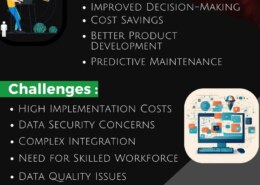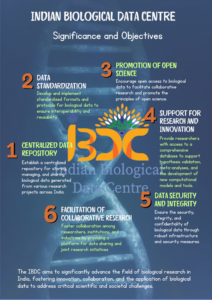Analyze critically the legal and policy frameworks in India that control the creation and application of new technology, like genetic engineering and drones.
Potential of Emerging Technologies in Transforming Various Sectors of the Indian Economy and Society Emerging technologies, particularly artificial intelligence (AI) and blockchain hold transformative potential for various sectors of the Indian economy and society. Their integration promises signifiRead more
Potential of Emerging Technologies in Transforming Various Sectors of the Indian Economy and Society
Emerging technologies, particularly artificial intelligence (AI) and blockchain hold transformative potential for various sectors of the Indian economy and society. Their integration promises significant advancements in efficiency, transparency, and innovation across multiple domains. Here’s a detailed examination of their potential impact:
Artificial Intelligence (AI)
Enhancing Healthcare
Potential: AI can revolutionize healthcare by improving diagnostics, personalized treatment, and patient care. AI algorithms can analyze medical data to detect diseases earlier and more accurately.
Recent Example: The AI-powered health platform developed by Niramai in 2023 uses machine learning to detect breast cancer through thermal imaging, significantly improving early diagnosis rates and accessibility to screening.
Impact: AI enhances diagnostic accuracy and reduces the burden on healthcare professionals, leading to better health outcomes.
Transforming Agriculture
Potential: AI applications in agriculture, such as precision farming, crop monitoring, and predictive analytics, can increase productivity and sustainability.
Recent Example: In 2024, the NVIDIA-powered AI solutions were adopted by several Indian agricultural startups to optimize irrigation and predict crop yields, helping farmers make data-driven decisions.
Impact: These technologies can optimize resource use and improve crop management, leading to higher yields and reduced environmental impact.
Revolutionizing Finance
Potential: AI enhances financial services through fraud detection, automated trading, and personalized financial advice.
Recent Example: The AI-driven fraud detection system implemented by the State Bank of India in 2023 uses machine learning to identify suspicious transactions and prevent financial fraud.
Impact: AI improves security, efficiency, and customer service in the financial sector, contributing to a more robust financial system.
Advancing Education
Potential: AI can personalize learning experiences, automate administrative tasks, and provide intelligent tutoring systems.
Recent Example: The AI-based EdTech platform, Byju’s, uses adaptive learning algorithms to tailor educational content to individual student needs, improving engagement and learning outcomes.
Impact: AI-driven education platforms enhance accessibility and effectiveness, potentially transforming the education landscape.
Blockchain Technology
Improving Supply Chain Management
Potential: Blockchain can enhance supply chain transparency, traceability, and efficiency by providing a decentralized ledger for tracking goods from origin to destination.
Recent Example: The IBM Food Trust network, implemented by several Indian food companies in 2023, uses blockchain to track the journey of food products, ensuring quality and reducing fraud.
Impact: Blockchain technology improves supply chain transparency, reduces fraud, and enhances food safety.
Enhancing Financial Transactions
Potential: Blockchain can streamline financial transactions by reducing intermediaries, lowering costs, and increasing transaction speed and security.
Recent Example: The India Blockchain Forum has been working on integrating blockchain for cross-border payments, aiming to reduce transaction costs and enhance efficiency in international money transfers.
Impact: Blockchain improves the efficiency and security of financial transactions, making the financial system more accessible and reliable.
Transforming Governance and Public Services
Potential: Blockchain can increase transparency and reduce corruption in public services by providing immutable records of transactions and processes.
Recent Example: The BharatNet project is exploring the use of blockchain for ensuring transparency in rural broadband implementation and monitoring fund utilization.
Impact: Blockchain enhances transparency and accountability in governance, potentially reducing corruption and improving public service delivery.
Empowering Digital Identity and Voting
Potential: Blockchain can offer secure and decentralized digital identity solutions and facilitate transparent voting processes.
Recent Example: In 2023, the Election Commission of India tested blockchain-based voting systems in select regions to explore secure and transparent voting methods.
Impact: Blockchain-based identity and voting systems can improve security, privacy, and transparency in critical democratic processes.
Conclusion
Emerging technologies such as artificial intelligence (AI) and blockchain hold significant potential to transform various sectors of the Indian economy and society. AI is poised to revolutionize healthcare, agriculture, finance, and education through enhanced data analysis and automation. Meanwhile, blockchain technology promises to improve supply chain management, financial transactions, governance, and digital identity systems by providing greater transparency, security, and efficiency. As India continues to integrate these technologies, addressing challenges related to implementation, regulation, and infrastructure will be crucial for maximizing their benefits and fostering sustainable growth.
See less



Regulatory and Policy Frameworks Governing New Technologies in India India’s regulatory and policy frameworks for emerging technologies like drones and genetic engineering are evolving rapidly to address their complex challenges and opportunities. Here’s a critical examination of these frameworks: 1Read more
Regulatory and Policy Frameworks Governing New Technologies in India
India’s regulatory and policy frameworks for emerging technologies like drones and genetic engineering are evolving rapidly to address their complex challenges and opportunities. Here’s a critical examination of these frameworks:
1. Drones:
Regulatory Framework:
DGCA Guidelines: The Directorate General of Civil Aviation (DGCA) governs the use of drones through the Civil Aviation Requirements (CAR) issued in 2018. These guidelines cover operational safety, pilot licensing, and operational restrictions.
Unmanned Aircraft System Rules (UAS), 2021: This rule introduces a more streamlined framework for the operation of drones, including provisions for different categories of drones, operational permissions, and the National Drone Policy, which aims to encourage innovation while ensuring safety.
Recent Developments:
Digital Sky Platform: Launched by DGCA, this platform facilitates drone registration and permissions, aiming to simplify regulatory processes and improve compliance.
Drone Policy 2.0: Announced in 2021, this policy includes provisions for easing regulations on drone usage, expanding their applications in agriculture, infrastructure, and surveillance.
Challenges:
Regulatory Rigor: Balancing innovation with security and privacy concerns remains challenging. For instance, the use of drones for surveillance and delivery services raises privacy and safety issues.
Implementation Gaps: There are concerns about inconsistent implementation and enforcement of regulations across states, which can lead to confusion and regulatory lapses.
2. Genetic Engineering:
Regulatory Framework:
Gene Technology Regulations: The Department of Biotechnology (DBT) oversees genetic engineering through the Genetic Engineering Appraisal Committee (GEAC). The guidelines regulate the research, development, and commercialization of genetically modified (GM) organisms.
Rules for the Manufacture, Use, Import, Export, and Storage of Hazardous Microorganisms/Genetically Engineered Organisms or Cells, 1989: This set of rules regulates the handling and safety procedures for GMOs.
Recent Developments:
GM Crop Approval: The approval of Bt cotton in India marked a significant step in the commercialization of GM crops. The government has been cautious with other GM crops, such as Bt Brinjal, reflecting ongoing debates about their impact on health and environment.
Genome Editing: In 2021, the Union Minister for Science and Technology, Dr. Jitendra Singh, emphasized the need for a robust framework to regulate genome editing technologies like CRISPR. These technologies hold promise for agriculture and medicine but require careful oversight.
Challenges:
Public Concerns: There is significant public resistance to GMOs, driven by concerns about food safety, environmental impact, and ethical issues. This resistance often influences policy decisions and regulatory approaches.
Regulatory Complexity: The multi-ministerial and multi-agency involvement in genetic engineering regulation can lead to a fragmented and sometimes cumbersome approval process. Streamlining this process while ensuring rigorous safety standards is a key challenge.
Conclusion:
The regulatory and policy frameworks for drones and genetic engineering in India are designed to foster innovation while addressing safety, privacy, and ethical concerns. Recent developments like the updated Drone Policy and the cautious approach towards GMOs reflect the dynamic nature of these regulations. However, ongoing challenges such as regulatory consistency, public apprehension, and complex approval processes need continuous attention to ensure that India can effectively harness the benefits of these new technologies while mitigating potential risks.
See less